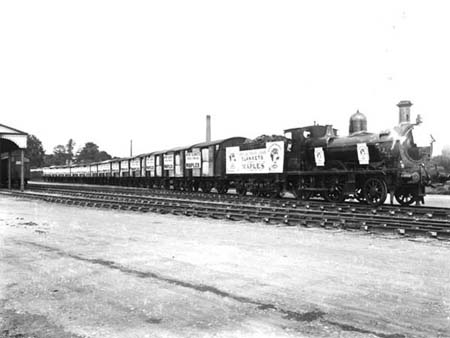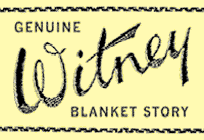|
|
|
Blanket advertising
 'Witnedown' brand advertising sign made for Smith and Philips'.
The companies took varying approaches to promoting their blankets but tradition, good quality, uniqueness, luxury, durability and value for money are themes that seem to have been adopted time and again.
 Early's advertising sign from the 1950s showing John Early
presenting blankets to King George III and Queen Charlotte.
 Witney Blanket Company label showing their Buttercross logo.
Publicity stunts were sometimes carried out, like making a blanket in one day from sheep shearing to ready for use. Early's performed this trick twice, the first time in 1906 and then again in their tercentenary year 1969, setting a world record into the bargain (to find out more go to the Search the Collections section and search for 'lithograph').
 Train at Witney goods station. The engine and each van have
boards proclaiming their destination as Maple's department store
in London.
The long history of blanket making in Witney was often focussed on to reassure the customer about their blanket's good 'pedigree'. Illustrations of historic moments, such as trading with Native American peoples or presenting blankets to a monarch, were especially popular during the post-War patriotic period of the 1950s.
 Early's advertising sign from the 1920s showing three
generations admiring an 'Earlywarm' blanket.
 1930s advertising sign for a London department store showing
Witney blanket workers holding blankets out in the sun.
|
| |
|

